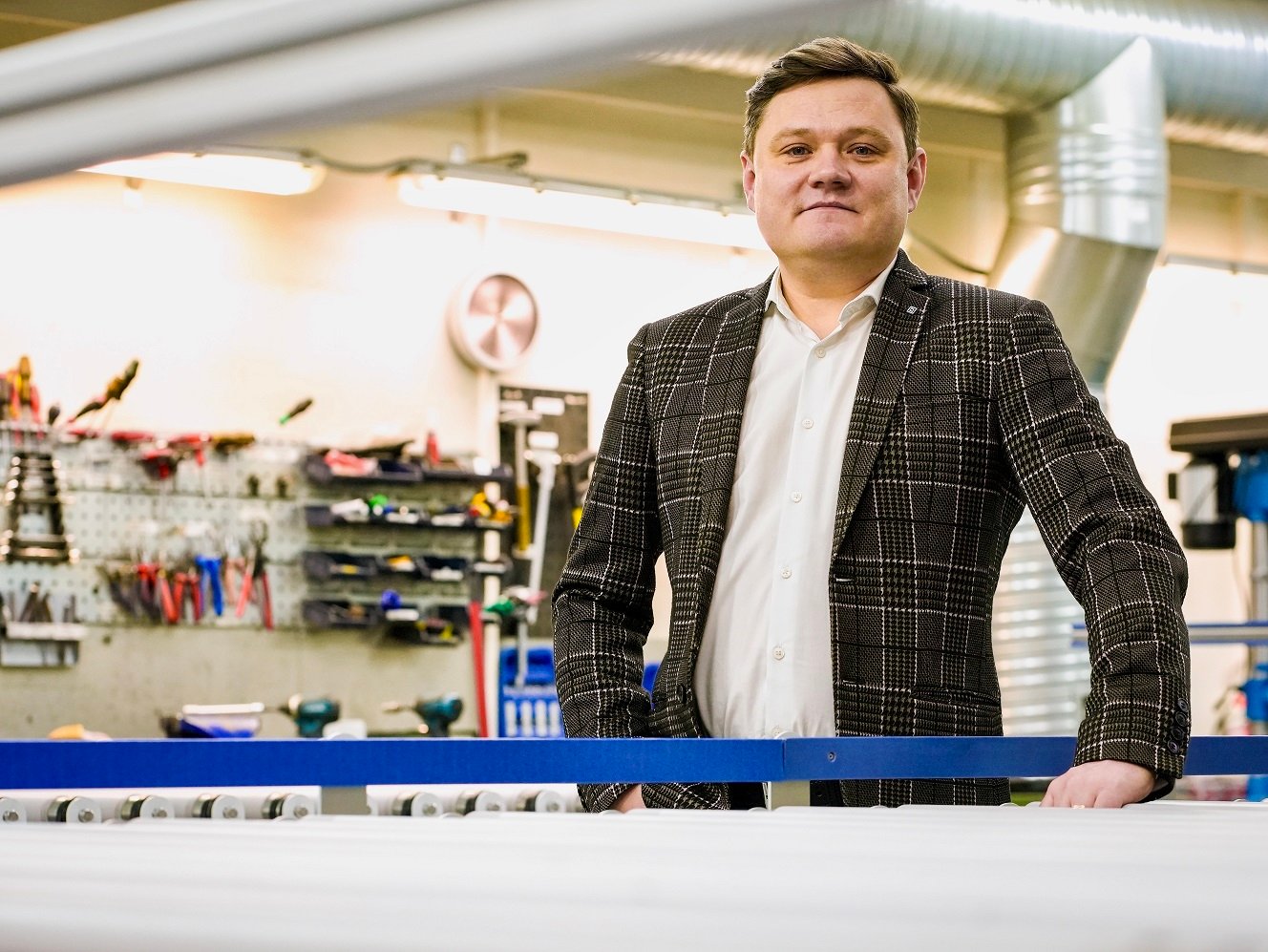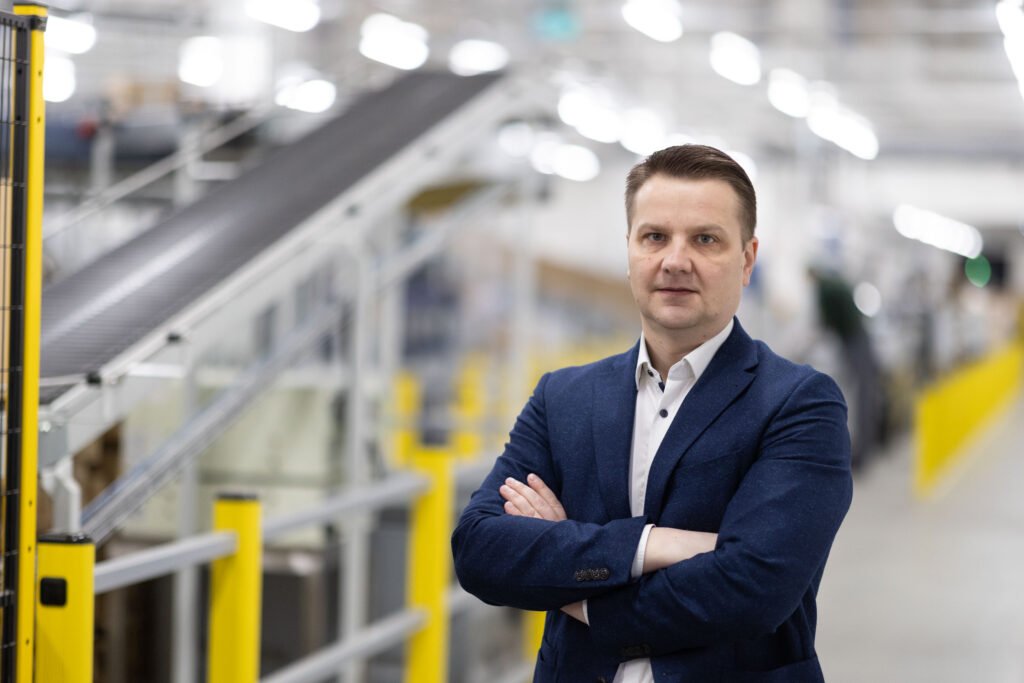When Standard Solutions do not Work: Modernization of a Production Line in Operation

Companies that decide to modernize their production lines often face specific challenges, such as lack of space for advanced equipment. In such situations, standard solutions are not helpful, individual circumstances must be considered and a unique, most appropriate way to implement modernization must be sought. With more than 30 years of experience, the company PakMarkas reveals what challenges can await and how to prepare for them.
Lack of space is often faced by a company that decides to automate a production line that is already in operation. It is necessary to adapt to the layout of the existing premises, in addition, it is important to anticipate several steps ahead and assess the weakest points of the production line, which may later become a “bottleneck” due to which the modernization will not have the expected effect.
“Usually, Lithuanian companies do not replace the entire production line, but only the part where physical force is used, where the work is monotonous, or where the possibility of human error arises. One of the most common problems arising in the automation of processes in long-standing companies is irrational layout and lack of space. When designing a new factory, the equipment to be installed is planned right away, while when modernizing an old line, it is necessary to adapt to the specifics of the existing premises. In this case, it is necessary to avoid the situation where after modernizing one part of the line and increasing the productivity, in some place it will not reach the expected productivity and we will face production limitations. This creates a need for customized, non-standard solutions,” assures Vaidas Pukinskas, the head of PakMarkas Engineering Sales Department.
The company helps its customers to complete the entire modernization journey, starting with consultations, assessments, and advice, and ending with line design, development of personalized solutions, equipment installation, maintenance and support during warranty and post-warranty periods.
Identifying the Weakest Link and Finding a Solution
“Increasing productivity is critically important, it has a decisive influence on our competitiveness in both local and international markets,” says Darius Murauskas, CEO of UAB “Vilniaus pakuotė”, which implemented a unique robotization project together with PakMarkas. “For example, we have implemented a fully automated packaging process in the company, and this solution has increased work productivity by almost 20 percent.”
The work speed of the production line in “Vilniaus pakuotė” was mostly limited by the stages of folding corrugated cardboard boxes and feeding them to the line. Since the area of the workshop was small and the amount of new equipment was limited, specialists of PakMarkas designed a workplace for one robot, to which these functions were transferred. This made it possible to shorten the process of folding and feeding the box even twice – from 11 seconds to 6 seconds.

“Vilniaus pakuotė” continuously monitors the production flow, analyses the factors limiting production efficiency; the company has also carried out a detailed study of the impact of materials and product types on overall production throughput. “We saw that the packaging and box folding processes were the most limiting to the overall production flow, while at the same time it was fairly easy to automate them. PakMarkas also contributed a lot to the success of the modernization project. Their specialists provided the necessary expertise and actively offered solutions,” says D. Murauskas.
However, the company itself is not always able to determine what would best help it increase productivity or solve an efficiency problem. Often, companies that have been operating for many years do not even have a drawing of the premises with the existing equipment. Therefore, specialists of PakMarkas not only install the equipment, but can also advise which solution – a robotic system, an automated conveyor or another – will be the best, considering the layout of the company’s production premises, the layout of the equipment, the specifics of the manufactured product or new needs. If necessary, PakMarkas also performs measurements of premises and equipment and digitizes information. Three decades of experience allow the company to provide reasoned advice and help customers decide which part of the line is worth modernizing first and how it could be implemented.
“Looking for a solution on how to achieve the desired goal in the most optimal way, we find out the company’s needs, assess the current situation, premises, equipment, product specifics and the result that would be considered successful. We involve mechanical design engineers, line designers, product specialists, automation engineers, project engineers, robotics specialists in finding a solution, mechanical design engineer can create a customised design and design non-standard products. It happens that we also make prototypes and test them in order to ensure the effectiveness of the created solution”, V. Pukinskas is telling.
He emphasizes that it is especially important not to forget to assess the future plans for expansion, increasing production volumes, or introducing a new product or package. This shall be considered when choosing equipment or an automation solution, evaluating the versatility of the equipment, the possibilities of increasing productivity in the future, using the equipment with another product.
 Robotization is Affordable to Most
Robotization is Affordable to Most
“Since Lithuania has lost its status of the country with cheaper labour force a long time ago, it is necessary to invest in advanced technologies in order to maintain and strengthen its position in the market. Automated and robotic solutions not only increase work productivity, but also allow to ensure a prominent level of quality, improve working conditions, and employee engagement,” the head of “Vilniaus pakuotė” is convinced.
Actually, there is often an opinion that it is not possible to automate or robotize the production processes of every company, especially if the company has been operating for several decades and, obviously, has processes coordinated to the last detail. There is still a myth that robotization is an extremely expensive progress that only large businesses can afford, and that highly qualified employees will be needed to manage robots. The experts of PakMarkas refute these beliefs.
“For multiple times I have visited companies that think that their work processes cannot be changed. However, you only need to walk around the production premises, and you can always find places where implementation of even partial automation solutions would lead to higher productivity, quality, and reduce the physical burden on employees. The installation of a robotic workplace may not cost 50 thousand Euro, and after installing the system and automating everything, it is enough to train the operators in simple start-up and control functions”, says V. Pukinskas.
Maintenance and servicing of robotic systems can be delegated to specialists. PakMarkas also organizes personnel training in working with new equipment. By implementing unique projects, the company is open to cooperation and believes that this is the most sustainable way.
„We do a lot of things ourselves, but we also cooperate with partners engaged in similar activities, equipment manufacturers from Lithuania and all over the world. Open cooperation helps us expand our capabilities, share our know-how and enables us to undertake more complex projects and successfully implement them within the agreed time. We are not open to competition, but to cooperation,” emphasizes the head of PakMarkas Engineering Sales Department.

